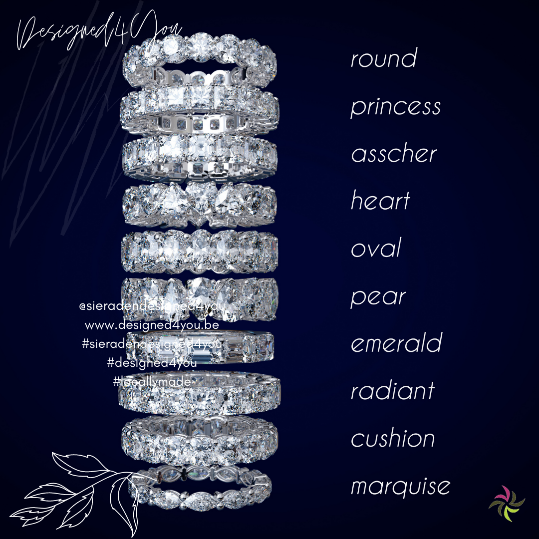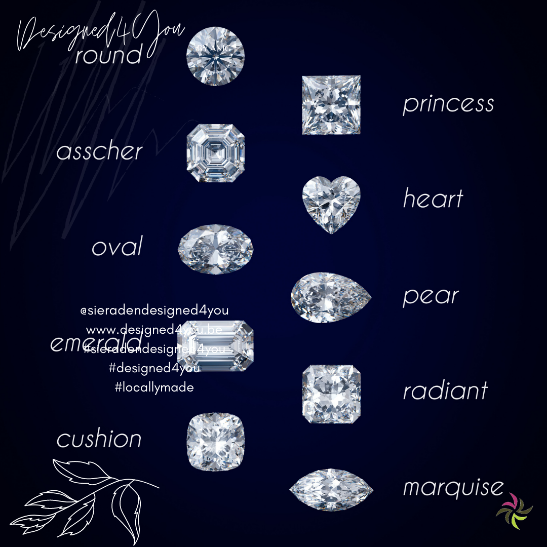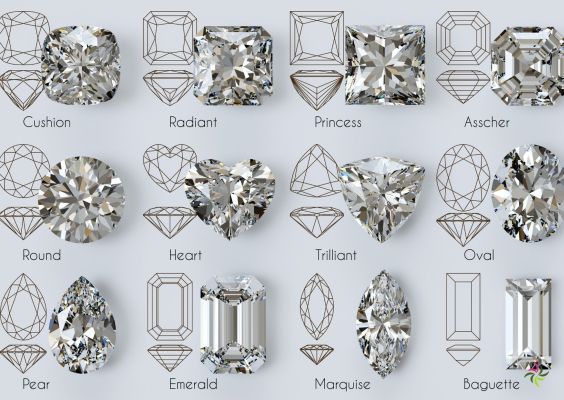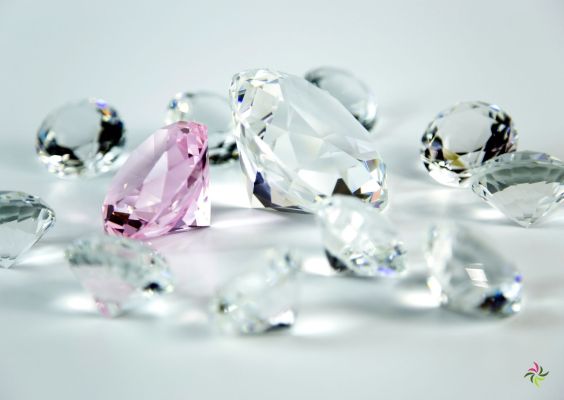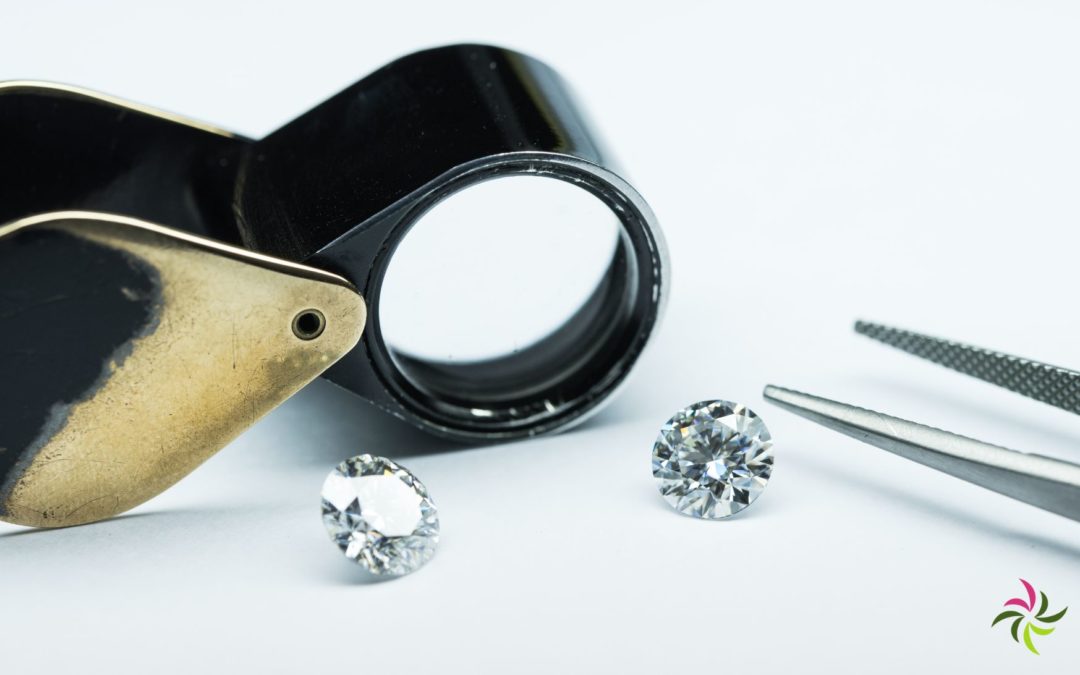Diamonds are a girl’s best friend
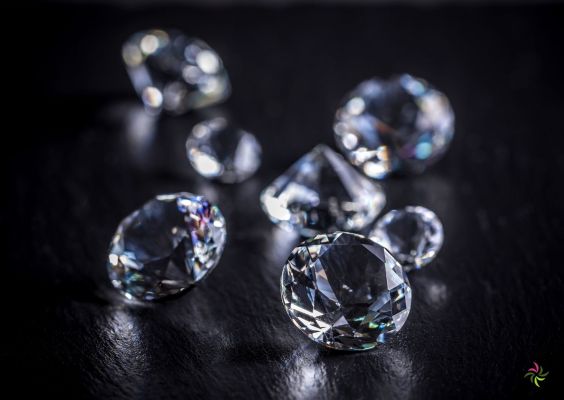
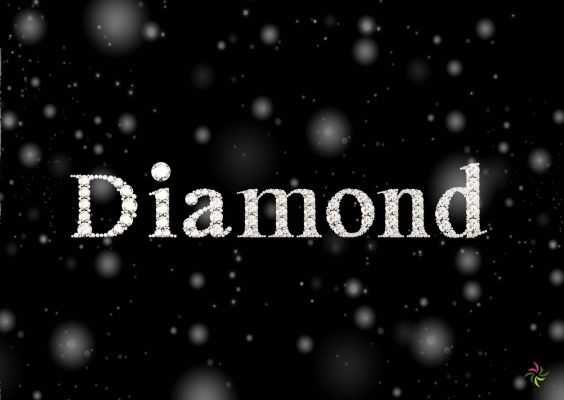
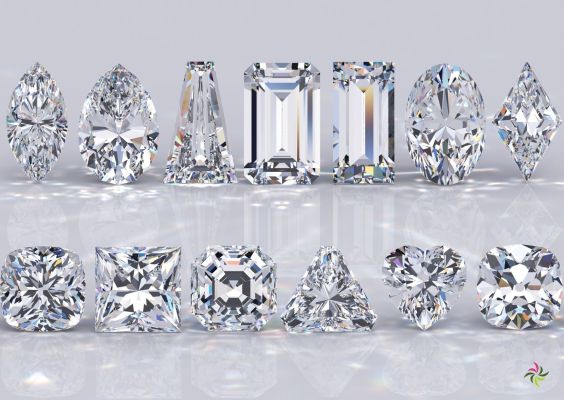
The creation of diamond
Diamond is carbon crystallised under high pressure and high temperatures. The process takes place in the deep parts of the earth’s crust (between 140 and 190km deep) to form diamond, temperature of 1100-1300°C are needed.
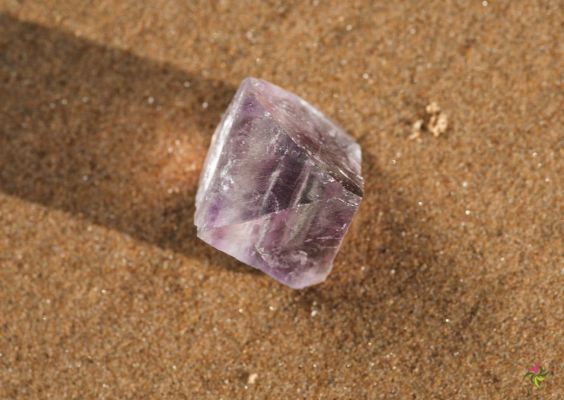
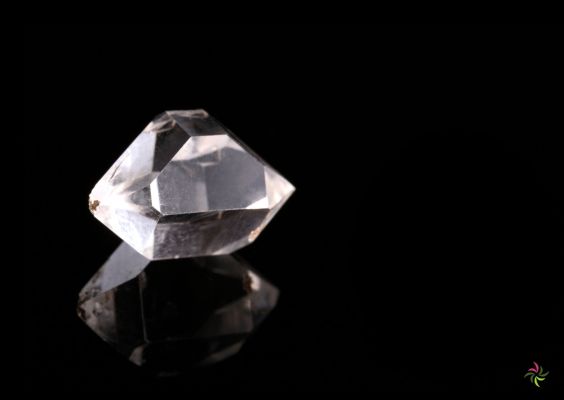
Thanks to volcanism, we can still find these stones at the surface. They have been forced to the surface with explosive force from the bowels of the earth and have solidified into crater pipes. The diamonds themselves are found in blue soil, the colour of which comes from the volcanic rock.
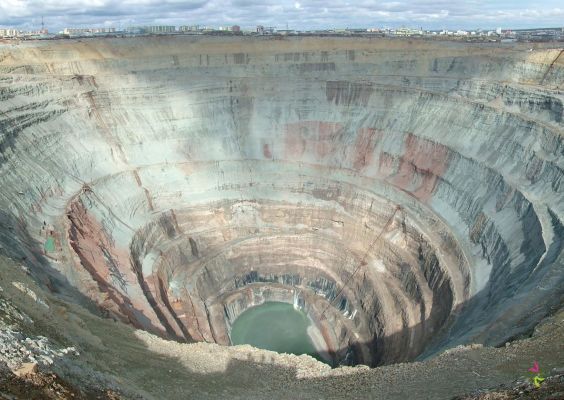
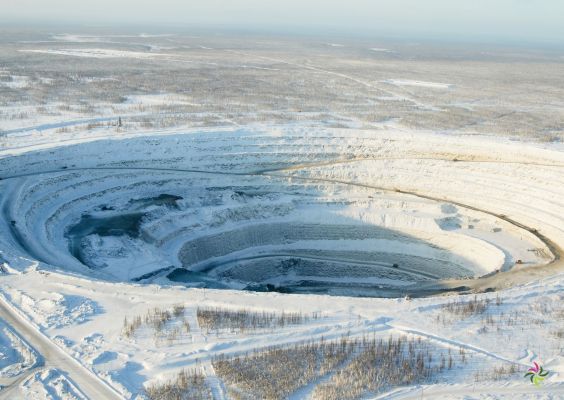
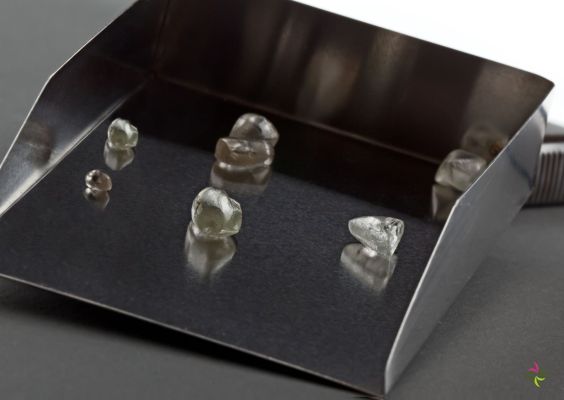
The carbon atoms accumulate over time under the pressure and heat. Eventually, the carbon particles together take on the shape of an octahedron – a double pyramid shape. This was also the first shape in which a diamond was cut. The whole process takes a few million years.
Nowadays, diamonds can also be made in laboratories.
Locations
Until the beginning of the 18th century, all diamonds came from Indian mines, which were then gradually being exhausted. From 1725 onwards, diamonds were also found in South America. In the 18th and 19th century, Brazil was the leader in diamond mining and was later relieved by South Africa.

Africa is the continent with the most diamonds. The first diamond discovery was made in 1866 in the source area of the Orange River, which flows through South Africa, Lesotho and Namibia.
In 1962, a large-scale exploitation began off the coast of Southwest Africa (Namibia). Deposits were also found in the Russian Urals in 1829, although they had no economic value.
But in 1949 important deposits were discovered in eastern Siberia (Yakutia) and later also numerous pipes. The most famous pipe, the Kimberley Mine, was dug by human hands between 1871 and 1908, without any machines, in Kimberly, a town in South Africa. It created the largest man-made pit in the earth’s surface, the well-known ‘Big Hole’ at Kimberly. The diameter at the surface is 460m and the shaft depth 1070m. A total of 14.5 million carats of diamonds were mined here! Meanwhile, the mine is closed.
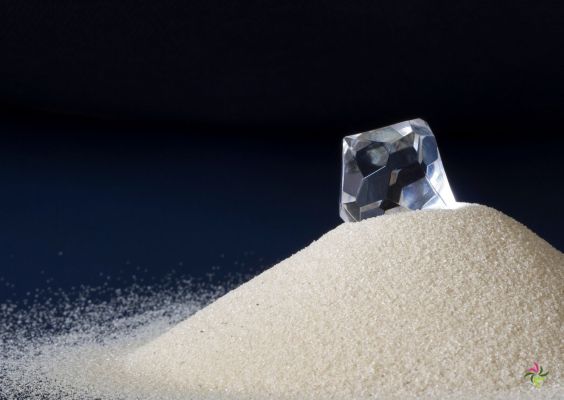
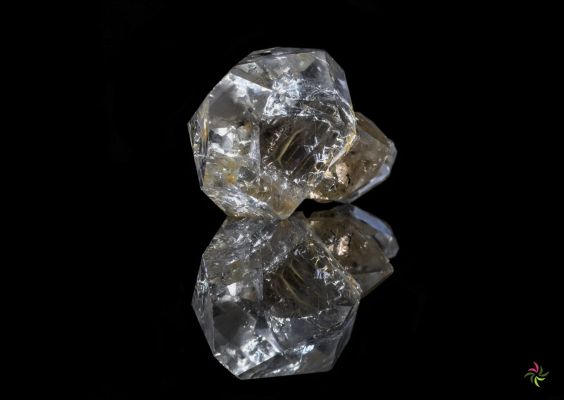
Mining
The mining of a kimberlite pipe is done by shaft construction. A shaft is made next to the pipe, stones are blown up and then one can start digging. The diamond-bearing rock is broken up and the newly freed space is filled with post-collapse debris. With stone crushers, the ‘blue ground’ is pulverised by exerting enormous pressure on it. The pulverised stone is then excreted as slurry in wash pans, leaving a concentrate of diamonds and other heavy minerals. The concentrate is poured onto a grease-lubricated, inclined conveyor belt. The diamonds then stick to the fat.
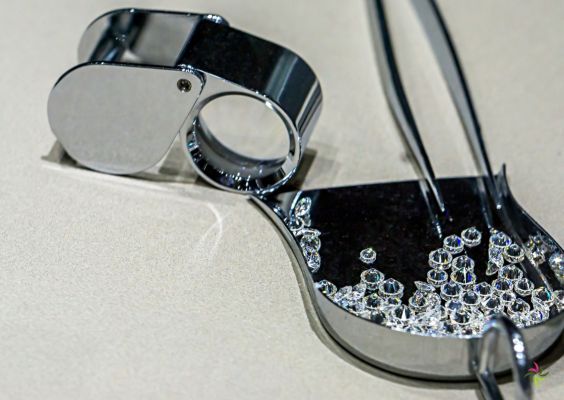
Diamonds can also be sorted by electrostatic separation, optical separation (using photocells) or fluorescence (using X-rays). One speaks of a profitable diamond yield when mining from 0.2 carats per ton of parent rock, on average there is 0.5 carats per ton of parent rock.
The diamond trade
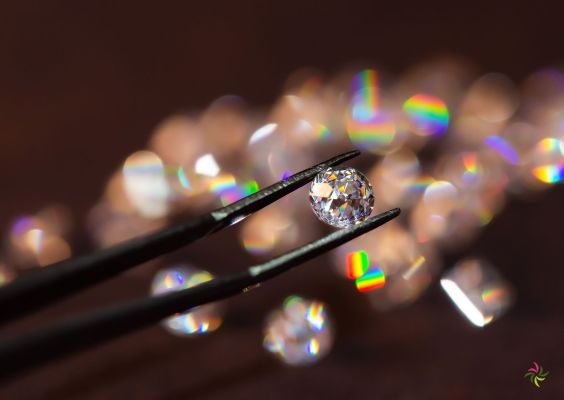
The world trade in rough diamonds is 80% directed and controlled by the sales organisations of ‘De Beers Consolidated Mines’, known as ‘The Diamond Trading Company’ with its headquarters in London. This ‘syndicate’ aims to be a buffer between production and trade. All diamonds suitable for jewellery are sorted by this company and can be bought by diamond dealers admitted by the syndicate at a fixed price and cash payment. From there, the diamonds go to the diamond exchanges. One of the main ones is Antwerp, where 50% of the world’s rough and 70% of polished diamonds are traded. The syndicate also controls and influences brokerage prices through its sales system. The aim is to maintain diamond prices at a reasonable level.
Diamond properties
Diamond is the only gemstone that is composed of a single atom, carbon (C). Diamond consists of pure carbon in a crystalline form. On diamonds, even the smallest stones, triangular etching figures can often be observed. They correspond to the planes of the octahedron, which is the crystal form in which diamond is most commonly found. Other crystal forms are the rhombic dodecahedron, the hexakis octahedron – twins according to the octahedron – and plate-shaped twin crystals. Characteristics of the diamond are rounded corners, curved surfaces and etched figures, the result of subsequent partial exposure to heat or etching substances.
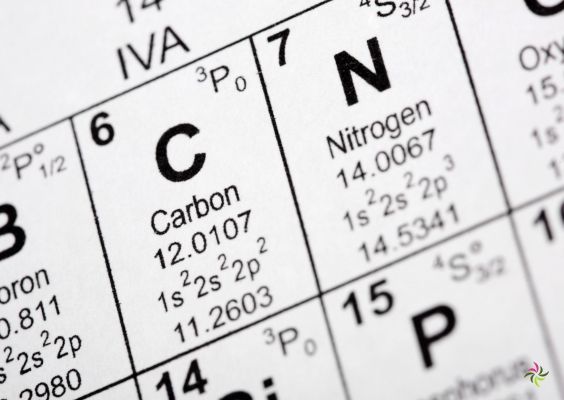
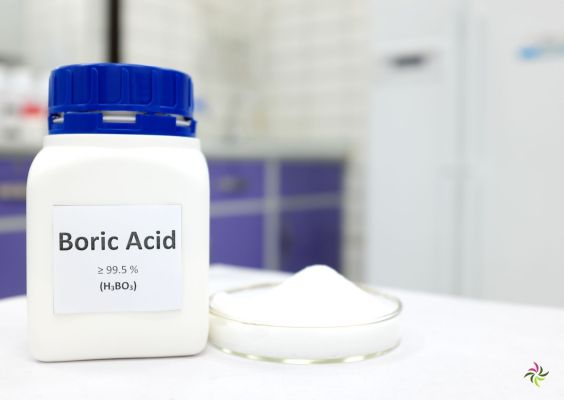
Diamond is generally insensitive to chemicals. Diamonds can be placed in the fire without sustaining any damage, making sure that there are no flaws or cracks that are too deep. Always cover against heat with borax and boric acid.
Diamond is the hardest of all minerals (hardness 10). However, this hardness is not the same for the different crystal surfaces. Therefore, it is possible to polish diamond with diamond, because every hardness is contained in diamond polishing powder.
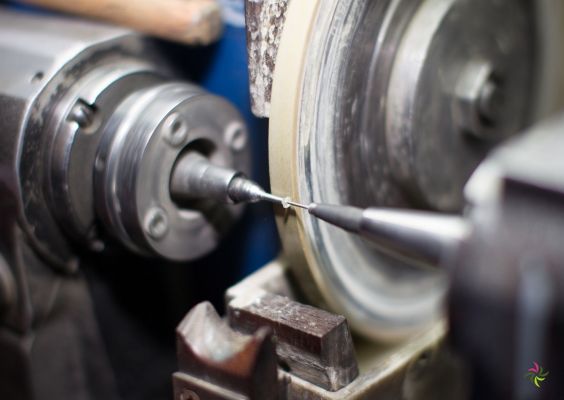
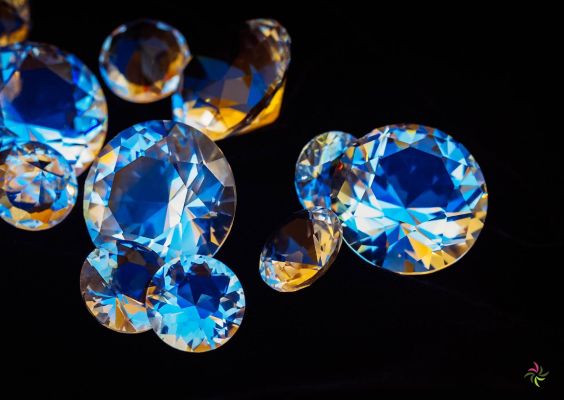
Colour and purity are determined by nature. The most sought-after and perfect colour in diamonds is that of total colourlessness, which by refraction leads to the famous “blue-white” effect.
Diamonds come in almost all colours, of which the yellow and brown ones are the most frequent. The carbon is coloured by chromium, which is found in the diamond, although it is so small that it is not mentioned in the chemical formula. Diamonds can, just like other minerals, change colour through irradiation.
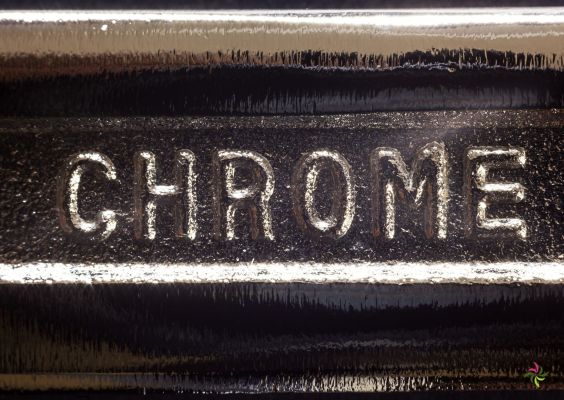
How are synthetic diamonds made?
“Lab grown diamonds or synthetic diamonds are created differently than natural diamonds. They consist of the same raw material, but need a shorter time to ‘grow’. These lab diamonds are created in 2 different ways.
The HPHT-method (High Pressure High Temperature) and the CVD-method (Chemical Vapor Deposition), the latter stands for chemical vapour deposition. They are cheaper than natural diamonds.
With the current techniques, a diamond can also be made with the ashes of your loved one. This gives the diamond a tangible and unique ash destination. This is possible because carbon is the second most common element in the human body. Diamonds are made by compressing carbon. Not many companies can do this yet, which also makes it quite expensive.

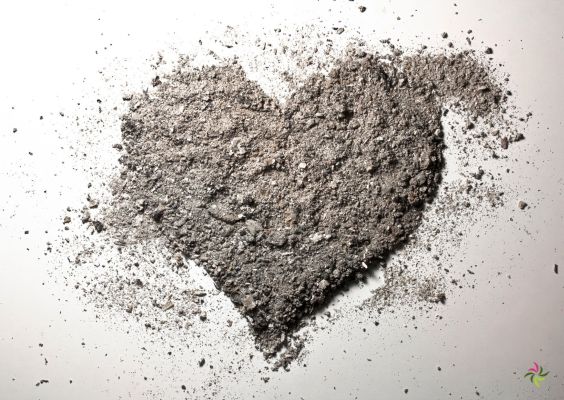
Quality of a diamond
The quality of a diamond is determined by four factors, the 4 C’s. These determine the value and price of a diamond. It is important to know what quality you are buying.
When you buy a diamond of which the quality is determined by the 4 C’s, you always get a certificate with the colour grading, purity, cut and weight.
What do the 4 C’s stand for?
Color – Colour
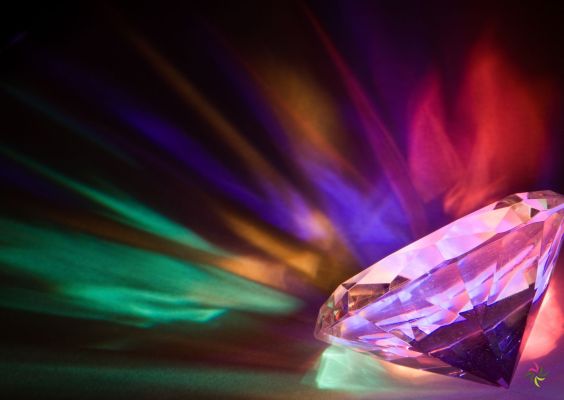
Each diamond is assigned a colour grade that determines its quality and value. The GIA has established an international colour set based on letters. Diamonds with a high colourlessness and high purity score the highest, and carry the label D, E or F. Lower graded diamonds with light yellow shading are given a label from S to Z.
Besides white, colourless or yellowish diamonds, there are also coloured diamonds such as brown, orange, pink, blue, red and green diamonds. These are called “fancy coloured”.
| Color | Name-designation | |
| D | Finest white+ | Completely colourless. These diamonds show no trace of a colour. They are very rare. |
| E | Finest white | Colourless. Only minute traces of colour can be discovered by a gemologist. |
| F | Fine white+ | |
| G | Fine white | As good as colourless. They appear colourless to the untrained eye. |
| H | White | |
| I | Light tinted white+ | Slightly tinted. They have barely visible warm-white colour. |
| J | Light tinted white | |
| K | Tinted white + | Very lightly tinted. |
| L | Tinted white | |
| M | Tinted colour | Visibly coloured, pale yellow. |
| N | Tinted colour | |
| O | Tinted colour | |
| P-Z | Tinted colour |
Clarity – Purity
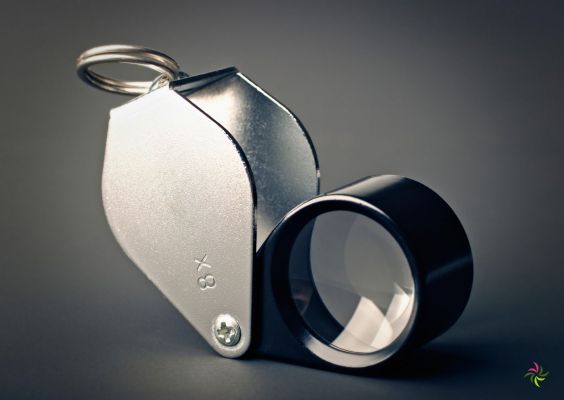
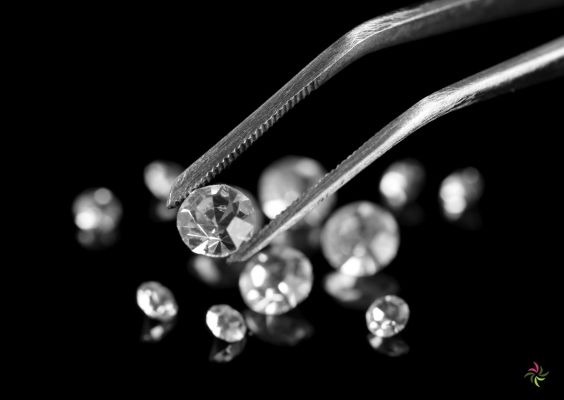
The purity is determined by an expert by putting the gemstone under a magnifying glass that magnifies the stone 10 times. The grosso modo of the diamonds will contain some impurities that hinder the clarity of the diamond. Because of this, the light cannot reflect as well, so these diamonds will not sparkle as much as a pure gemstone. When there are absolutely no impurities, the diamond is called flawless or ‘loupe clean’ and is therefore of the highest quality.
External impurities, caused by damage or wear, are called spots. Impurities inside the diamond are formed during the creation process of the gemstone and are called inclusions. There are three types of inclusions:
- Black spots or dark blotches – formed in the carbon phase
- Clouds or veils – microscopic veil-shaped inclusions that weaken clarity
- The most common type of inclusions are the fractures also known as plumes or feathers – molecular fractures in the carbon structure of the diamond.
|
Clarity |
Name-designation |
|
|
LC |
No inclusions |
Loupe Clean or flawless i.e. highest degree of clarity. No inclusions visible under magnification 10x. |
|
VVS1 |
Very small inclusions, invisible to the naked eye |
Very Very Small Inclusion: The inclusions are difficult to see under a magnifying glass with 10x magnification. |
|
VVS2 |
||
|
VS1 |
Very Small Inclusion: The inclusions are visible with a 10x magnifier, but invisible to the naked eye. |
|
|
VS2 |
||
|
SI1 |
Small inclusions, may be visible |
Small Inclusion: The inclusions may be visible to the naked eye. |
|
SI2 |
||
|
I1 |
Visible inclusions |
Inclusion: The inclusion is clearly visible to the naked eye. |
|
I2 |
Carat
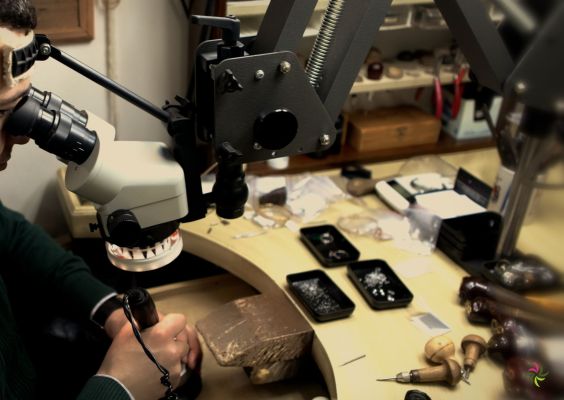
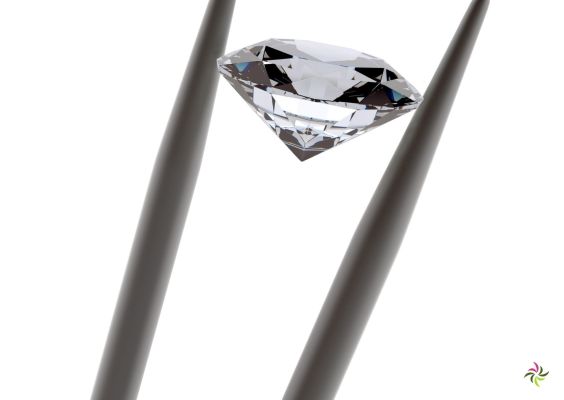
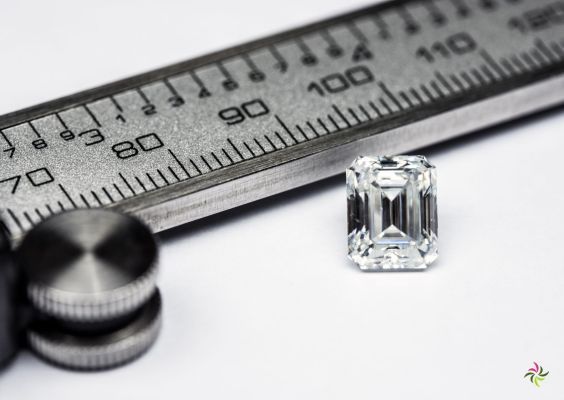
The unit of weight is, as for other gemstones, the carat (ct).
1 carat : 1/5 gram = 0.2 grams = 200 mg
The carat is further subdivided into hundredths or points:
1 carat = 100 points
1 point = 1/100 carat or 2mg
2 grein = 0.50ct
1 grein = 0,25 ct
The weight of a diamond is therefore expressed in carats to two decimal places. The price of diamonds is generally expressed “per carat”.
Cut – Cutting quality
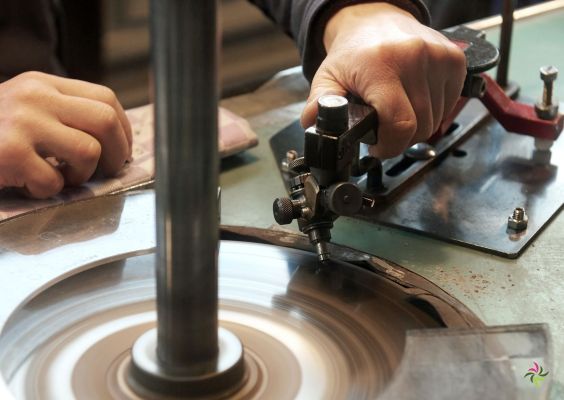
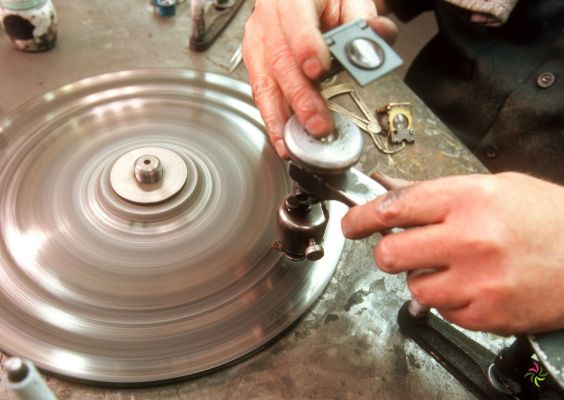
The polishing (a human intervention) of a rough diamond in different facets determines the brilliance of the gemstone. The more facets that are cut during the polishing process, the more the diamond will reflect the light and determine the shine.
The part that determines whether the light will reflect beautifully is called the pavilion of a diamond, which cannot be cut too deep or too shallow. Diamonds that are not beautifully cut will let light escape or will show dark surfaces. Perfectly cut diamonds will almost always let the light shine through the top part (the crown).
The cut of the flat surface (or table) can make the diamond optically look bigger. The girdle, the ‘edge’ on the side of the diamond, provides the solidity of the gemstone. The girdle is described from extremely thin to extremely thick.
Also at the bottom of the diamond we find a facet, called the culet. A diamond has no point, but a minuscule surface that is not visible to the naked eye. A perfectly cut culet adds to the brilliance of the diamond and ensures that the light does not escape at the bottom.
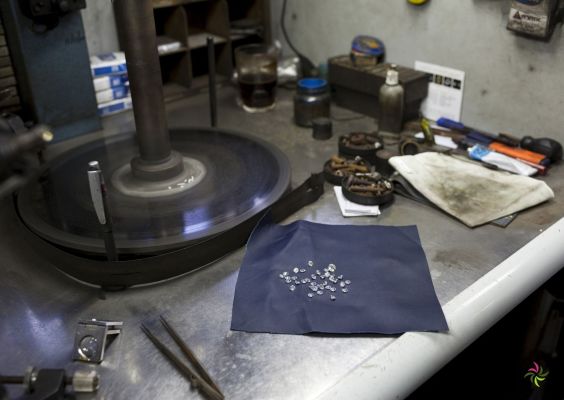
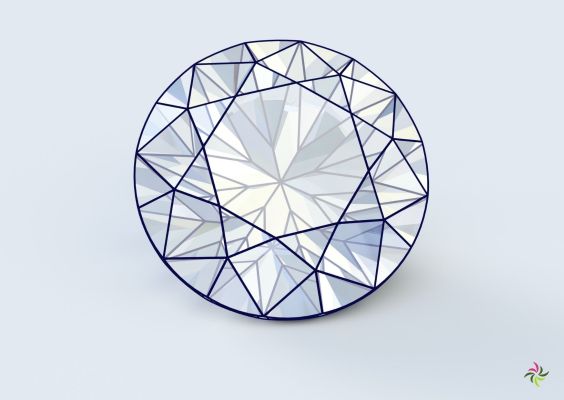
What cuts are there?
The best known cut is the brilliant or round cut. The diamond is cut in 57 or 58 facets. A brilliant cut shines the brightest. There are also other cuts known as ‘fancy cuts’ that are cut in multiple facets. Depending on your personal taste, you can finish your jewel with a diamond in marquise, pear, oval, heart, princess or emerald shape.
